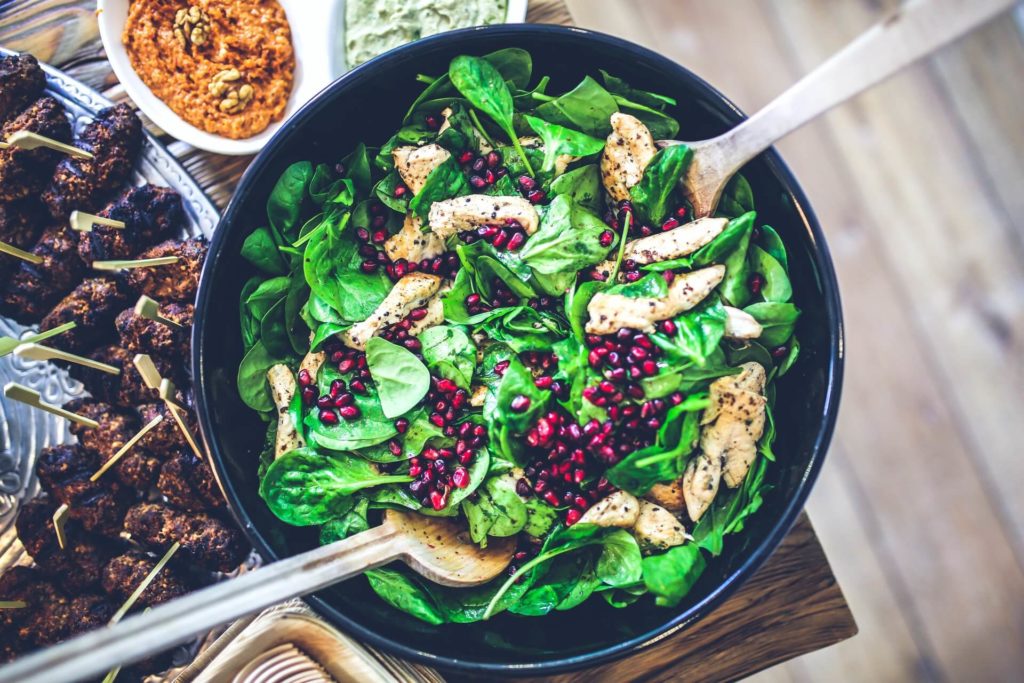High blood pressure, or hypertension, can be controlled in a variety of different ways. While medications can help lower blood pressure, dietary changes can also be beneficial. A diet low in sodium and rich in whole grains, fruits, and vegetables is recommended for people with high blood pressure. This diet is often referred to as the DASH diet, or Dietary Approaches to Stop Hypertension.
The DASH Diet
The DASH diet really isn’t a diet at all but rather a lifestyle change. It provides dietary guidelines for people with high blood pressure. The guidelines allow those suffering from hypertension to make their own meal choices out of food recommendations that are low in sodium and high in fiber and other vitamins that benefit those with high blood pressure.
While those that follow the DASH diet may experience weight loss, this is simply because they are making healthier choices, not because the diet is designed to reduced weight. Losing weight is an added bonus as weight loss can also help to reduce blood pressure.
The standard DASH diet is based on the consumption of 2,000 calories per day and no more than 2,300 mg of sodium per day. The lower sodium DASH diet allows no more than 1,500 mg of sodium per day. Which diet is right for you depends on your own individual health concerns. You should always consult with your physician before starting any new diet plan.
What’s Allowed on the DASH Diet?
The DASH diet recommends a meal plan rich in whole grains, fruits, vegetables, low-fat dairy, and small amounts of low-sodium meats like poultry and fish. Foods that are limited include red meat, nuts, seeds, legumes, sweets, and fats. Fats that are specifically avoided include trans fat and saturated fat.
A daily meal plan for the standard DASH diet should include:
- 6-8 servings of whole grains like cereal, wheat bread, brown rice, and whole-wheat pasta.
- 4-5 servings of vegetables such as broccoli, sweet potatoes, carrots, and green beans.
- 4-5 servings of fruit such as blueberries, bananas, apples, and strawberries.
- 2-3 servings of low-fat dairy such as milk, yogurt, cheese, and cottage cheese.
- 1-6 ounce serving or smaller of a lean meat, fish, poultry, or egg per day.
- 2-3 servings of fats and oils such as low-sodium salad dressing, unsalted butter, or mayonnaise.
- 4-5 servings per week of nuts, seeds, and legumes.
- 5 servings or less per week of sweets such as jelly, sorbet, graham crackers, or other low-fat cookies and cakes.
- 1-2 alcoholic beverages.
- Limited amounts of caffeine since caffeine can cause a temporary rise in blood pressure.
Things to Avoid on the DASH Diet
The DASH diet’s main goal is to limit sodium consumption. Avoid processed foods such as frozen prepared meals, canned goods, chips, pretzels, and fast food. Instead, prepare meals at home from scratch as much as possible so that you can control the amount of sodium being added. Canned goods, snacks, and frozen meals that state no sodium added or low-sodium are fine in small amounts.
Alcohol and caffeine can both raise blood pressure so it’s recommended that these be consumed in small amounts. Specific recommendations for alcohol and caffeine consumption should be discussed with your physician.
To flavor your food, replace salt with other herbs and spices like garlic powder, pepper, cumin, and onion powder. You can also purchase spice blends that contain no salt.
When cooking, choose oils and fats that have no added salt or sugar in them. This will help cut down on the overall sodium content in your food. Cook with non stick pans to limit the need for fats and oils even more.
Final Thoughts
High blood pressure can be lowered with dietary changes and exercise. In addition to following the above dietary recommendations, engaging it at least 30 minutes of physical activity every day can help reduce blood pressure.
When blood pressure isn’t being controlled by dietary changes and exercise alone, you should speak with your physician about other options that are available to you to help reduce hypertension, such as prescription medications and certain supplements.

